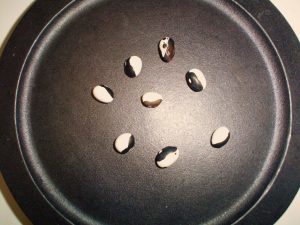Yin-Yang. . .What Does it Mean?
By Dr. Denice Moffat
The Yin-Yang concept
I have researched books over the years, searching for books that could explain Oriental medical philosophy in understandable terms. The closest I have come so far is a book called Between Heaven and Earth by Harriet Beinfield, L.Ac. and Efrem Kornfold, L.Ac., O.M.D. Practical Feng Shui by Simon Brown .
Personally, I don’t think Oriental philosophy should be so daunting but it sure seems to be! I think everyone should work towards understanding each other’s cultures so we can integrate and utilize information better and with more clarity. I like using whatever works, no mater where it comes from and I think we can integrate all kinds of techniques. This is what I have gleaned on the Yin/Yang philosophy so far…
Yin energy is calm, wet, clammy, cooling and female. Yang energy (pronounced yawn) is hot, fast, dry and male. Kind of sounds chauvinistic, doesn’t it?
All things we come in contact with either have Yin qualities, Yang qualities, or are a mixture of both. Nothing is either totally Yin or totally Yang. Everything lies on a continuum of either more yin or more yang and the qualities are only in relation to one another.
For example, in the summer when it’s hot out we are attracted to more yin foods and yin colors because our body is warmer and needs to equilibrate. So we drink iced drinks, eat more salads, wear lighter colors and turn on our air conditioners. We slather on Noxema cream on our sunburns (a very yin remedy) and use a touch of peppermint essential oil (a yin herb) on our temples to calm our thoughts and ease our headaches.
In the winter, cooler months and on cool rainy days we are attracted to yang energy in the form of hot drinks, heavy bodied foods, soups, saunas, warmer darker colors, wood stoves, and warmer clothing. We use more spices like ginger, cayenne, horseradish and pepper.
When Eastern practitioners make up herbal formulas, the goal is to balance out the yin and yang herbs by observing which is imbalanced in the body and then compensating for and correcting the deficiencies or excess heat or cold the body is producing. So, each herb is classified as strong yin, yin, weak yin, weak yang, yang or strong yang. (There’s that continuum again.)
When a formula does not work, most likely it was either the wrong combination or the wrong proportion of yin-yang. One thing I like about muscle testing is that the practitioner can tap into the body’s individual vibratory field and ask the higher self what herbs and supplements it needs and in what amounts to reestablish equilibrium. Some healers, and I include medical doctors in this category, actually have a sixth sense about what will work and what won’t. Medicine is an art (right-brained) as well as a science (left-brained).
When looking for members of your healing team, you want to find the artists in the field of medicine that are practicing their science. Ahh, there’s that balance again. It’s all about balance.
Helpful Links and References on the Yin-Yang Concept:
- Definition of Yin-Yang Concept: https://en.wikipedia.org/wiki/Yin_and_yang

